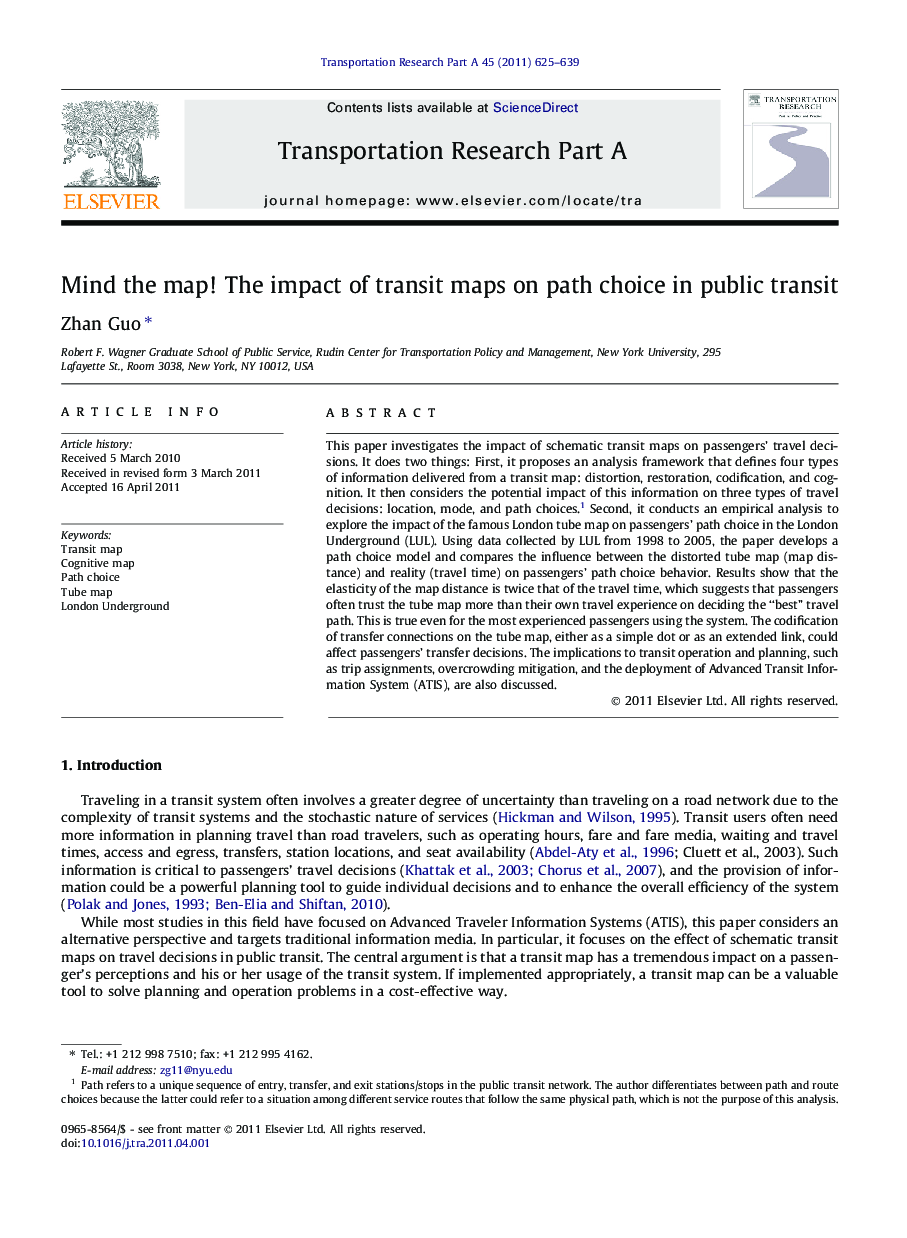| Article ID | Journal | Published Year | Pages | File Type |
|---|---|---|---|---|
| 310845 | Transportation Research Part A: Policy and Practice | 2011 | 15 Pages |
This paper investigates the impact of schematic transit maps on passengers’ travel decisions. It does two things: First, it proposes an analysis framework that defines four types of information delivered from a transit map: distortion, restoration, codification, and cognition. It then considers the potential impact of this information on three types of travel decisions: location, mode, and path choices.1 Second, it conducts an empirical analysis to explore the impact of the famous London tube map on passengers’ path choice in the London Underground (LUL). Using data collected by LUL from 1998 to 2005, the paper develops a path choice model and compares the influence between the distorted tube map (map distance) and reality (travel time) on passengers’ path choice behavior. Results show that the elasticity of the map distance is twice that of the travel time, which suggests that passengers often trust the tube map more than their own travel experience on deciding the “best” travel path. This is true even for the most experienced passengers using the system. The codification of transfer connections on the tube map, either as a simple dot or as an extended link, could affect passengers’ transfer decisions. The implications to transit operation and planning, such as trip assignments, overcrowding mitigation, and the deployment of Advanced Transit Information System (ATIS), are also discussed.
Research highlights► Schematic transit maps offer important but geographically inaccurate information. ► Such map information could affect passengers’ location, mode, or path choices. ► A path choice model is developed for 18,894 passengers in the London Underground. ► Passengers trust the map (map distance) more than their own experience (travel time). ► Codification of transfer stations on a map affects passengers’ transfer decisions.
